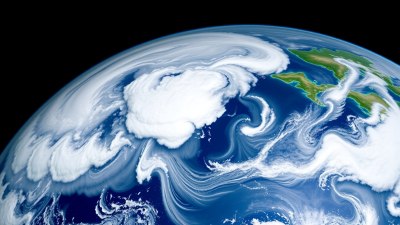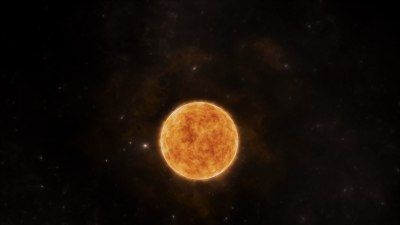What If Earth Had Two Suns How Weather Would Change Forever
Explore the profound impacts of having two suns on Earth's climate and weather patterns.

This image was created with the assistance of Freepik
Imagine a world where Earth is orbited by not one, but two suns. The very fabric of our climate would undergo radical transformations, leading us into a new era of weather dynamics that could reshape ecosystems and human civilization.
To understand the potential implications, we must first examine how our current sun influences climate. The Earth’s climate system is heavily reliant on solar energy, which drives temperature, weather patterns, and ocean currents. In a two-sun scenario, the increased solar radiation would have cascading effects on every aspect of the planet's meteorological systems.
The Impact on Temperature
The most immediate impact would be on global temperatures. Currently, the Earth receives energy primarily from one sun, which creates a diverse range of climates from the icy poles to the warm equator. However, with two suns, average temperatures would likely increase significantly. Depending on their distance from Earth and their luminosity, these dual suns could raise global temperatures by anywhere from a few degrees to significantly more.
This increase in temperature could lead to a scenario where tropical regions expand, potentially converting temperate zones into warmer climates. This shift could obliterate current agricultural practices that rely on specific temperature ranges, forcing humanity to adapt to these new conditions.
Changes in Weather Patterns
Besides temperature changes, weather systems would also see significant transformations. The presence of two suns would cause alterations in wind patterns, precipitation, and storm systems. Atmospheric circulation depends on temperature gradients, and with dual heating sources, the balance could be disrupted.
We could witness the formation of more intense storms as the increased heat fuels convection currents within the atmosphere. The frequency and intensity of hurricanes, typhoons, and other severe weather events might rise dramatically. While some regions may become hotter and dryer, others could become more temperate or wetter, leading to unforeseen shifts in ecosystems.
Extreme Weather Events
The increased thermal energy input could significantly alter the frequency and severity of extreme weather events. Regions that currently experience seasonal weather patterns could find themselves subjected to unpredictable climatic variations. In addition, the enhanced energy exchange between the atmosphere and oceans could lead to stronger El Niño and La Niña phenomena, causing erratic weather across the globe.
With more moisture in the atmosphere, we might see a rise in precipitation levels in some areas, potentially resulting in flooding, while others could experience extended droughts. These shifts could have severe implications for freshwater resources, agriculture, and biodiversity.
Ocean Currents and Their Impact
Oceans play a key role in regulating global climate through currents that distribute heat. Dual suns would impact ocean temperatures, leading to changes in current dynamics. A warmer ocean could alter marine ecosystems, causing shifts in fish populations and affecting food security for billions of people who rely on the seas for sustenance.
Furthermore, changes in ocean temperatures can disrupt the process of upwelling, which brings nutrient-rich water to the surface. This disruption could lead to diminished fish stocks and drastically impact global fisheries.
Ecological Consequences
With altered climates, ecosystems around the globe would be profoundly affected. Species that require specific habitats may find themselves unable to survive in a world dominated by two suns. Biodiversity could suffer as habitats change or disappear, leading to the extinction of many species.
Conversely, some species may thrive in warmer conditions, leading to an imbalance in existing ecosystems. This could pave the way for invasive species to dominate and further exacerbate the biodiversity crisis.
Human Adaptation and Survival
Humanity’s survival in a world with two suns would require significant adaptation strategies. Agricultural practices would need to shift, with potential new crops developed to withstand higher temperatures and altered weather patterns. Increased reliance on technology for climate control, irrigation, and water management would become paramount.
Urban planning would also need to evolve, with cities designed to accommodate increased temperatures and extreme weather events. Infrastructure would need to be resilient to flooding and severe storms, requiring significant investments in adaptation measures.
Socioeconomic Impacts
The economic ramifications of having two suns would be profound. Regions that are currently agricultural hubs could become barren, leading to food shortages and potential conflicts over resources. Migration patterns might shift, with people moving away from now-uninhabitable areas into regions that can still support life.
New economic opportunities might arise in areas accustomed to higher temperatures, but these would likely be outweighed by the challenges of adapting existing industries. Global supply chains would undergo significant strains as different parts of the world experience unequal effects of dual suns.
The Psychological Effect
In addition to physical and economic challenges, living in a world with two suns could have psychological effects on humanity. The inability to adapt to new environmental realities could lead to increased anxiety, depression, and societal tension. People might find it difficult to adjust to such profound changes in their daily lives and environments.
Education systems would need to incorporate climate science to prepare future generations for a radically changed world, focusing on sustainability, adaptability, and resilience.
Technological Innovations
The necessity of adapting to living under two suns could also drive technological innovations. Renewable energy sources might be more aggressively pursued, leading to significant advancements in solar energy technology. Investment in new forms of energy generation that can harness the more intense sunlight could result in breakthroughs that might benefit humanity.
Additionally, geoengineering projects could be considered to mitigate the severe impacts of increased solar radiation, though these come with ethical and practical concerns.
Global Cooperation
Facing the challenges posed by two suns would require unprecedented global cooperation. Countries would need to work together to share resources, technology, and knowledge to effectively manage the new climatic challenges. Collaborative efforts could help transition industries and foster research initiatives aimed at innovative solutions to new problems.
Environmental groups and scientists might bridge gaps between nations to create unified responses to climate crises. This cooperative spirit could lead to new global governance frameworks that prioritize sustainability and resilience in the face of climate change.
In conclusion, the hypothetical scenario of Earth having two suns would forever alter weather patterns, climate, and the way humanity interacts with the environment. From shifts in temperature and precipitation to profound impacts on ecosystems and human society, the ramifications are vast and complex. Adapting to such a reality would not only require technological advances but also a reevaluation of our values and priorities as stewards of the planet. As we ponder these changes, we must consider our relationship with the natural world and the ways we can work toward sustainable living in a rapidly changing climate.











